Orientation measurement of polyethylene by polarized Raman spectroscopy
April 19, 2024
Introduction
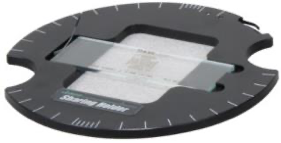
A plastic string like on the right has the property of easily deformed in one direction, but strong in another direction. This is due to orientation of polymer molecular chains in a certain direction, increasing the physical strength. Similarly, the orientation of polymer materials such as films and chemical fibers is closely related to the functions and properties of the materials. Using polarized microscopic Raman spectroscopy, it is possible to measure the micron-ordered area with non-destructive and non-contact method to evaluate the orientation of the polymer*1.
In this note, we introduce the results of the orientation analysis of a polyethylene string using a polarized microscopic Raman system and the IQ Frame.
Experimental
A polyethylene string was affixed on a metal plate and set in the IQ Frame*2. In the measurement, the analyzer was placed so the sample was parallel to the polarization direction of the incident light (laser), and the polarized Raman scattering parallel to the incident light was detected. The sample was rotated in 10° steps using the scale on the IQ Frame, and Raman spectra were obtained at each of the 36 points (total 360°) using the rotational alignment function of the IQ Frame.
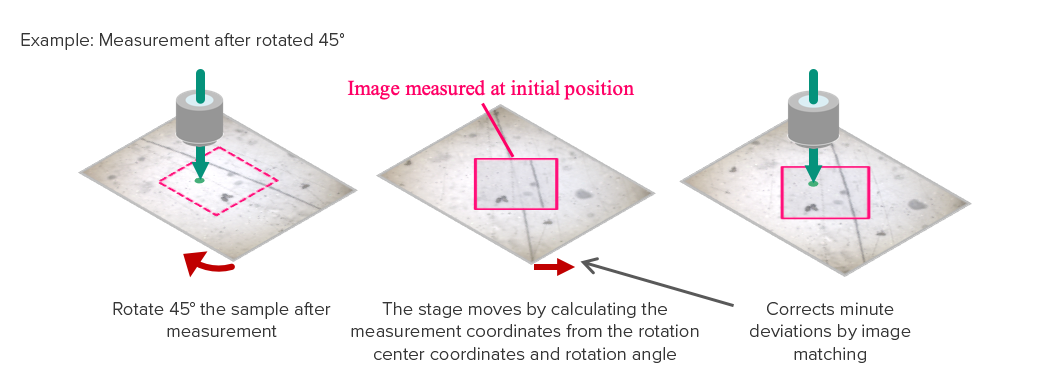
Rotational alignment function
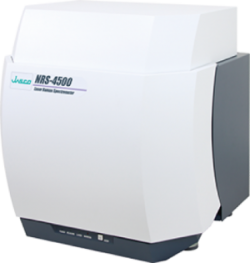
After rotating the sample under the microscope, it is a challenge to align exactly at the same measurement position. The rotational alignment function mentioned in this note uses the image matching technology of the IQ Frame, and the measurement position can be aligned accurately and quickly even if the sample is rotated. It is especially effective when evaluating the orientation of a heterogeneous sample.
| Measurement Conditions: Raman Microscopic System | |
| Main Unit | NRS-4500 Raman spectrometer |
| Ex Wavelength | 532 nm |
| Objective Lens | 20x |
| Exposure Time | 3 seconds |
| Accumulation | 2 times |
Keywords
030-AN-0024, Raman spectroscopy, polarization, polyethylene, IQ Frame
Results
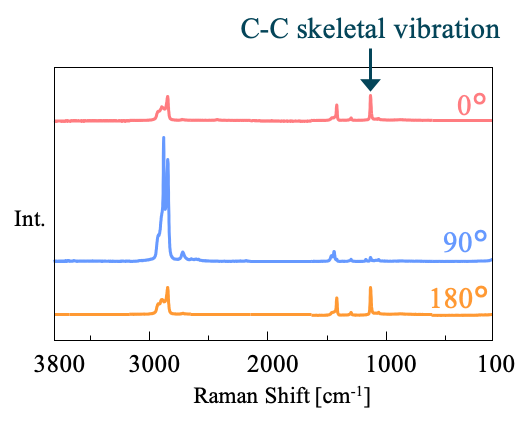
First, it can be confirmed from the optical images shown in Figure 5 that the same point can be measured at each angle. As a result of obtaining Raman spectra by rotating the polyethylene string by 360º, changes were observed in the peak of C-C skeletal vibration indicated by the arrow in the spectrum of Figure 4. The peak of C-C skeletal vibration is closely related to the degree of orientation. From the results in Figure 5 in which the peak intensities were plotted for each angle, it was confirmed an 8-shaped intensity distribution with maxima at 0º and 180º.
Therefore, it was suggested that the polyethylene string measured was strongly stretched uniaxially in the laser polarization direction (horizontal direction on the paper) at 0º and 180º.
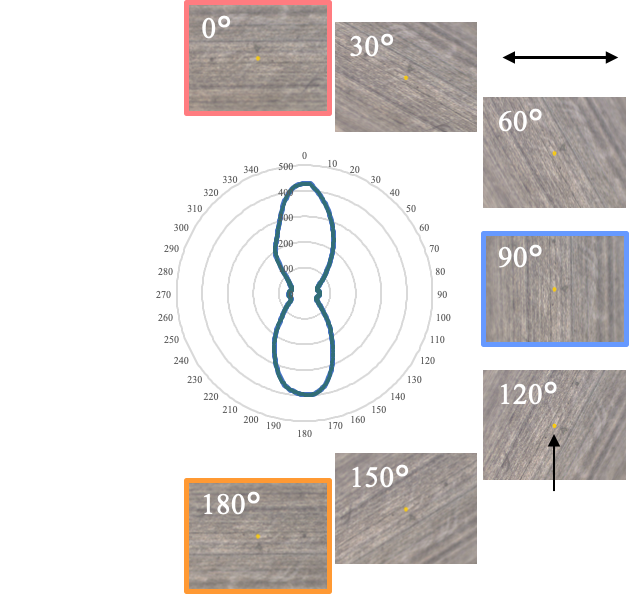
Conclusion
Combining the polarized microscopic Raman system and the rotational alignment function of the IQ Frame, the orientation state of the polyethylene string was evaluated accurately. This combination could be used to evaluate the orientation of various polymer films and fibers such as polyethylene terephthalate and polypropylene.
*1 Raman Application Note: 210-AN-0019
*2 Raman Application Note: 210-AN-0016
| System Configuration | Model | Description | Part Number |
| Main Unit | NRS-4500-532 | Raman Spectrometer | 7118-J051A |
| Options | RAP4-745 | Automatic polarization measurement unit (0/90 degree switching) | 6882-J501A |
| SH02-RM | IQ Frame for Raman | 7071-J137A |
Featured Products:

Orientation measurement of polyethylene by polarized Raman spectroscopy
Introduction

A plastic string like on the right has the property of easily deformed in one direction, but strong in another direction. This is due to orientation of polymer molecular chains in a certain direction, increasing the physical strength. Similarly, the orientation of polymer materials such as films and chemical fibers is closely related to the functions and properties of the materials. Using polarized microscopic Raman spectroscopy, it is possible to measure the micron-ordered area with non-destructive and non-contact method to evaluate the orientation of the polymer*1.
In this note, we introduce the results of the orientation analysis of a polyethylene string using a polarized microscopic Raman system and the IQ Frame.
Experimental
A polyethylene string was affixed on a metal plate and set in the IQ Frame*2. In the measurement, the analyzer was placed so the sample was parallel to the polarization direction of the incident light (laser), and the polarized Raman scattering parallel to the incident light was detected. The sample was rotated in 10° steps using the scale on the IQ Frame, and Raman spectra were obtained at each of the 36 points (total 360°) using the rotational alignment function of the IQ Frame.

Rotational alignment function

After rotating the sample under the microscope, it is a challenge to align exactly at the same measurement position. The rotational alignment function mentioned in this note uses the image matching technology of the IQ Frame, and the measurement position can be aligned accurately and quickly even if the sample is rotated. It is especially effective when evaluating the orientation of a heterogeneous sample.
| Measurement Conditions: Raman Microscopic System | |
| Main Unit | NRS-4500 Raman spectrometer |
| Ex Wavelength | 532 nm |
| Objective Lens | 20x |
| Exposure Time | 3 seconds |
| Accumulation | 2 times |
Results

First, it can be confirmed from the optical images shown in Figure 5 that the same point can be measured at each angle. As a result of obtaining Raman spectra by rotating the polyethylene string by 360º, changes were observed in the peak of C-C skeletal vibration indicated by the arrow in the spectrum of Figure 4. The peak of C-C skeletal vibration is closely related to the degree of orientation. From the results in Figure 5 in which the peak intensities were plotted for each angle, it was confirmed an 8-shaped intensity distribution with maxima at 0º and 180º.
Therefore, it was suggested that the polyethylene string measured was strongly stretched uniaxially in the laser polarization direction (horizontal direction on the paper) at 0º and 180º.

Conclusion
Combining the polarized microscopic Raman system and the rotational alignment function of the IQ Frame, the orientation state of the polyethylene string was evaluated accurately. This combination could be used to evaluate the orientation of various polymer films and fibers such as polyethylene terephthalate and polypropylene.
*1 Raman Application Note: 210-AN-0019
*2 Raman Application Note: 210-AN-0016
| System Configuration | Model | Description | Part Number |
| Main Unit | NRS-4500-532 | Raman Spectrometer | 7118-J051A |
| Options | RAP4-745 | Automatic polarization measurement unit (0/90 degree switching) | 6882-J501A |
| SH02-RM | IQ Frame for Raman | 7071-J137A |
Keywords
030-AN-0024, Raman spectroscopy, polarization, polyethylene, IQ Frame

 Download This Application
Download This Application